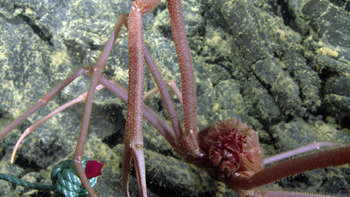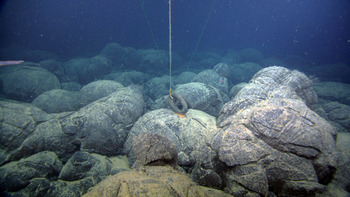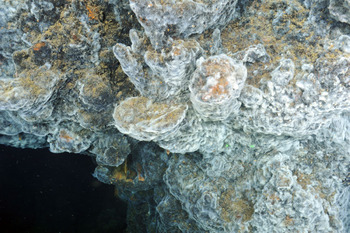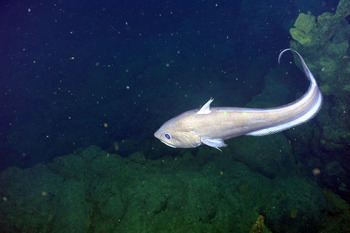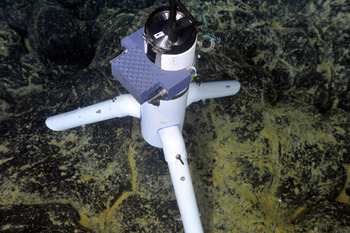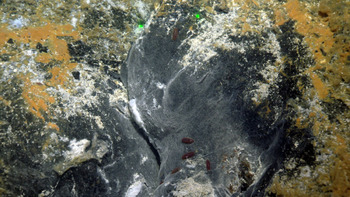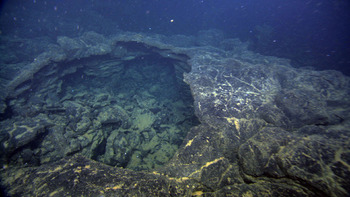
A small collapse zone north of the International District Hydrothermal Field showing characteristic bathtub rings and talus rubble that is the remanents of the roof.

Small Collapse Blister

A full-sized frame was sucessfully deloyed and recovered in the International District Hydrothermal Field at Axial Seamount using ROV ROPOS during the August 2011 VISIONS '11 expedition. A similar frame, when fully built out, will house the equipment to provide power and communications to extension cables and sensors deployed within the Axial Caldera. The nodes will be installed in 2013 at thsi site.

Full-size RSN Test Frame
Today was a busy day with the termination of a very long dive that started last night and ended in the afternoon. The dive started in the International District Hydrothermal Field on the eastern edge of Axial's caldera wall. During the initial portions of the dive the full-scale test frame built by APL was successfully decoupled from ROPOS – another first. ROPOS then began a several-hour survey north to Primary Node PN3B to determine an optimal cable route from the International District to PN3B. Along the way fantastic imagery was obtained of various lava formations, collapse zones, and the new lava flow. Then, before traveling back toward the International District, ROPOS then spent a couple hours exploring possible alternate deployment sites for PN3B.
Along the way the vehicle made a brief stop at Marker 33, a diffuse flow site that was covered by the new lava flow, but which is now active again. We imaged the very dense microbial communities that have grown since the eruption as well as new, small colonies of palm worms, tubeworms, and scale worms that have already begun to colonize the site.
From Marker 33 we continued to the International District and recovered a temperature sensor from the high-temperature black smoker named El Guapo. We are most anxious to get a look at the temperature record to see if there have been any changes in vent fluid temperature prior, during, or after the eruption. We also successfully recovered a temperature sensor from a small pagoda-like structure at the base of El Guapo. ROPOS took an excellent sulfide sample from the top of El Guapo that will be studied onshore to understand which microbial communities live within the new growth and what metabolic functions they might have.
Dive 1471, late this evening and into the early morning hours of Sunday, will focus on the ASHES vent field. Here we will recover the Sensorbot array and camera, take some temperatures of the black smokers, and recover some microbial experiments.
The days are flying by and we are looking ahead to make sure that we accomplish all the tasks we set out to do at the beginning of the VISONS '11 program.
